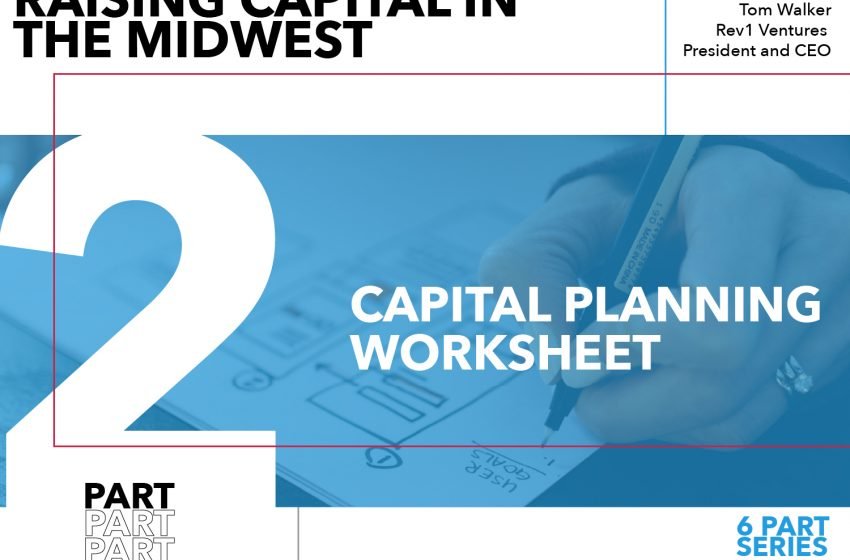Tom Walker, Rev1 Ventures President and CEO
Note: “Rules for Startups Raising Capital in the Midwest” is a multi-part Entrepreneur Toolkit series based on Rev1 Ventures Capital Access Learning Lab. We suggest you review all sections: Part 1 – Basic Information on Venture Capital, Part 2 – Capital Planning Worksheet, Part 3 – Building Your Investor List, Part 4 – Due Diligence, Part 5 – Investor Outreach, and Part 6 – Deal Terms.
This material is also available in Rev1’s Toolkit eBook – Rules for Startups Raising Capital in the Midwest (download here.)
Serial entrepreneur and venture capitalist Mark Suster have great advice for entrepreneurs and his fellow VCs: “Invest in lines, no dots.”
VCs are looking for patterns of success before they invest. They want to look at the trajectory of your company and see progress over time. Entrepreneurs who meet milestones help VCs connect the dots.
Capital Planning Worksheet
Step 1: Define transaction indicators and relevant metrics
Understand the key metrics that investors focus on in your industry. Come up with a plan for those metrics and map them against your fundraising timeline.
Relevant metrics
- Active users
- Annual or Monthly Recurring Revenue (ARR) or (MRR)
- Customer acquisition cost (CAC)
- Churn
- Clinical indication
- Clinical pathways
- Cohort analysis
- Commercially-ready prototype
- FDA stage of the process
- Gross Margins
- Loan-to-value (LTV)
- Monthly growth rate
- Product certifications (i.e. FCC, UL certificates)
- Proof of concept – technical viability study
- Validated in-vivo studies
- Working prototype
Don’t forget burn rate and runway, too!
Step 2: Define commercial milestones
1. Create a timeline of value creation milestones for the next 12 to 24 months.
Common traction indicators
- Betas
- Customer Surveys
- Customers
- FDA Stage
- FDA Stage
- Letters of Intent
- Technical feasibility study
- Wait lists
Examples
- Adding first five paying customers.
- Signing Joint Development Agreement (JDA) with a corporate partner
- Approval of STTR Phase 1
- Indication of safety/efficacy in FDA trial
2. Identify resources needed to accomplish each milestone.
Resources
- Contractors
- Critical hires
- Manufacturing capability
- Lab space
- SBIR/STTR
- Strategic agreements
- IP rights and protections
Examples
- Hiring vice president of market development
- Contracting 2 JavaScript programmers
- Submitting patent application
- Leasing lab or contract manufacturing space
3. Match milestones to resources required to capital needs.
- Identify amount of capital required to achieve each significant milestone for the next 24 months.
- Identify sources of capital that match company’s stage of business.
- Allow realistic timeframe to achieve milestones
4. List key business assumptions—all of them.
- Who buys your product and for how much? Who uses it?
- What are your costs—fixed, variable, direct and indirect?
- How will your business make money?
- How are you going to sell your product? Direct or indirect?
- How will you achieve efficiencies of scale?
5. Create financial projections
- Prepare monthly financial projections (sales revenue, operating and capital expenditures, grand income, etc.)
- How will the milestones of the first six to eight months enable you to raise the next round of capital?
- Connect the dots!
Come up with a plan for achieving those metrics and map that plan against the company’s fund-raising timeline. Create a plan that ensures critical metrics immediately before when the company plans to start raising capital.

